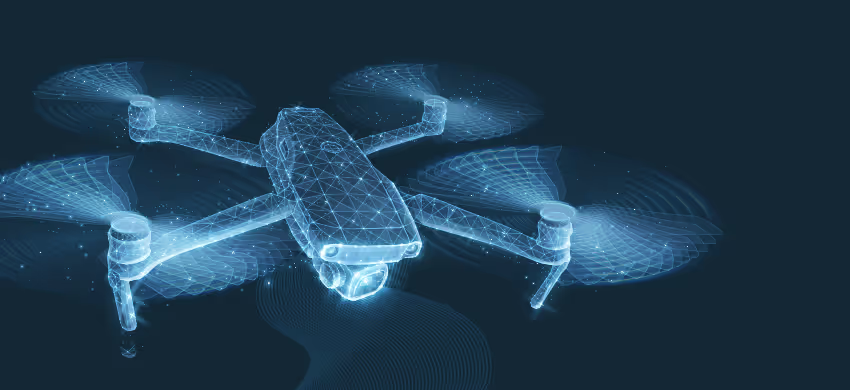Your Airspace Has a Blind Spot—We Can Fix That

As drone activity surges around U.S. airports, traditional airspace management tools are failing to solve the problem. Small, low-flying drones—especially those that are not emitting—can easily slip past legacy detection tools, creating serious safety concerns especially during critical moments like takeoff and landing.
New federal guidance and investment initiatives are helping airports fix this. Backed by recent executive orders and expanded funding opportunities, these efforts aim to modernize airport safety infastructure, and equip operators with the tools they need to ensuring the safety and security of flight operations.
The Escalating Drone Threat to Airports
- In 2024, drones were involved in nearly two‑thirds of reported near‑midair collisions at the 30 busiest U.S. airports—occurring most often during the critical takeoff and landing phases. In one case near San Francisco, a drone came within 300 feet of a cockpit.
- In early 2025, the FAA recorded 411 unauthorized drone incursions near airports—an increase of roughly 25.6% over the same quarter in 2024. Incidents included a commercial airliner passing within 20 feet of a drone at about 3,300 feet altitude.
- The number of drone sightings across U.S. airspace continues to grow. The FAA reports 100+ UAS sightings near airports per month, suggesting persistent and widespread airspace violations.
These trends highlight a real and escalating risk where a single collision could have catastrophic consequences.
Why Traditional Radar Falls Short
Conventional airport radar systems are optimized for large, transponder-equipped aircraft. They often cannot detect small, low-flying drones, especially those that emit no signals or operate in cluttered environments. By the time a drone is visually confirmed the critical response window may already be lost.
A Proactive Solution: Passive RF and Passive Radar Detection
Hidden Level’s Airspace Monitoring Service (AMS) fills these detection gaps using passive RF and radar analysis. Without emitting signals or interfering with existing systems, AMS can:
- Detect both emitting and silent or “dark” drones
- Locate drones and drone operators via RF direction finding
- Deliver real-time alerts and historical analytics
- Integrate seamlessly via API into existing airport operations and response systems
Executive Orders and Federal Funding
Drone Defense Gets Federal Attention
In June 2025, the administration signed additional drone- and counter‑UAS–focused Executive Orders, directing federal agencies to accelerate U.S. leadership in drone technologies, infrastructure protection, and enforcement mechanisms around critical infrastructure, including airports.
What This Means for Airports
Recent executive actions make drone detection a requirement—not just a recommendation—for critical infrastructure operators. EO 14305 directs federal agencies to implement detection and identification capabilities, while also instructing DHS and the FAA to issue guidance and unlock funding for infrastructure owners, including airports.
Secretary of Transportation Sean Duffy has stated that air traffic control overhaul will require $31.5 billion in spending that the FAA must provide to help American airports address the evolving technology and threat environment. The recent budget bill already started this push with $12.5 billion allocated to the FAA to start this transition.
Hidden Level’s Airspace Monitoring Service aligns directly with these mandates, offering a passive solution that can integrate into other aviation airspace management systems to fill the gap on small drone detection while not interfering with airport communications or other detection technology.
Real-Time Visibility. Zero Infrastructure Burden.
Hidden Level’s AMS provides:
- Instant alerts upon drone incursions in restricted zones
- Drone and Operator location detection for enforcement coordination
- Historical incident data to support pattern analysis and security planning
- Custom monitoring zones, covering runways, perimeters, fuel depots, etc.
The Future of Airspace Safety Is Passive
With drone incursions on the rise and federal directives now in place, the mandate is clear—detection is detection is required, integration is expected, and the time to act is now.
Built to address the growing demand for non-intrusive airspace awareness, Hidden Level’s solution fits seamlessly into modern airport operations. It's operational today, aligned with current federal requirements, and designed to integrate seamlessly into the broader airspace protection architecture emerging under EO 14305.
Whether your airport needs to meet federal detection mandates, unlock funding opportunities, or lay the groundwork for integrated mitigation, Hidden Level is ready to support your next step. Assess your detection readiness and meet new federal requirements—start here.











